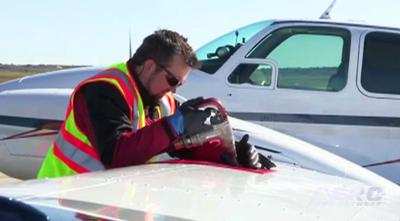Wed, Feb 26, 2025
Fleet Authorization Q&A
EAGLE is a government-industry initiative to Eliminate Aviation Gasoline Lead Emissions involving the aviation and petroleum industries, government stakeholders, and a broad range of interested parties and constituents collaborating to transition to lead-free fuels for piston engine aircraft by 2030 without compromising the safety or economic health of the general aviation industry.

The group is presenting a series of updates describing the progress being made and how the various parts are making the transition come to fruition. The first update in December 2024 presented how pilots and aircraft owners are affected by the STC process and what’s involved in that.
In its latest update, the consortium discusses how the FAA is managing the fleet authorization process for approval of unleaded fuel.
EAGLE describes what the FAA’s fleet authorization process is and why it is important for pilots and owners. The process was developed through the use of the Piston Aviation Fuels Initiative (PAFI) with guidance by ASTM standards. This will result in the authorization of qualified unleaded fuels for use in aircraft that are identified by make and model that are able to safely operate with the fuels. Those will be compiled and published in the FAA’s Eligible Fleet Authorization Summary Report.

To accomplish this, the FAA collaborates with industry to test candidate fuels and their compatibility with various aircraft materials, engines, operating environments, and supply chain components.
Once a fuel is deemed qualified and published in the Summary Report, the FAA will issue a Special Airworthiness Bulletin (SAIB) that identifies the fuel and specify which aircraft and engines are eligible to use it.
Fleet authorization differs from the STC in that the STC requires FAA approval for each specific aircraft model and engine model. Once a fuel is approved, aircraft owners musr purchase the STC and work with a certified mechanic to implement the modifications required by the STC. Further details about the initiative and approval processes are provided on the EAGLE website.
More News
Pilot Applied Full Aft Stick And Nose-Up Trim, But The Airplane Remained On The Runway Analysis: The pilot reported that a preflight inspection and flight control checks revealed n>[...]
A Few Questions AND Answers To Help You Get MORE Out of ANN! 1) I forgot my password. How do I find it? 1) Easy... click here and give us your e-mail address--we'll send it to you >[...]
From 2022 (YouTube Edition): Before They’re All Gone... Humankind has been messing about in airplanes for almost 120-years. In that time, thousands of aircraft representing i>[...]
Advanced Air Mobility (AAM) A transportation system that transports people and property by air between two points in the NAS using aircraft with advanced technologies, including el>[...]
Aero Linx: MQ-1B Predator The MQ-1B Predator is an armed, multi-mission, medium-altitude, long-endurance remotely piloted aircraft that is employed primarily as an intelligence-col>[...]
 NTSB Final Report: Douglas A-4K
NTSB Final Report: Douglas A-4K ANN FAQ: Q&A 101
ANN FAQ: Q&A 101 Classic Aero-TV: PBY Catalina--From Wartime to Double Sunrise to the Long Sunset
Classic Aero-TV: PBY Catalina--From Wartime to Double Sunrise to the Long Sunset ANN's Daily Aero-Term (07.01.25): Advanced Air Mobility (AAM)
ANN's Daily Aero-Term (07.01.25): Advanced Air Mobility (AAM) ANN's Daily Aero-Linx (07.01.25)
ANN's Daily Aero-Linx (07.01.25)




